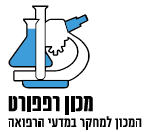
Ellenore Koren
PhD Student

Ido Caspy
PhD Student
Ellenore Koren
In 2015, Elle moved from Australia to Israel as an “Olah Chadasha” (new Israeli citizen) to study at the Technion Israel Institute of Technology under the supervision of Prof. Yaron Fuchs. Her research focuses on the regulation of cellular suicide (apoptosis) in adult stem cells and the effects of stem cell death on tissue regeneration and wound healing.
In her studies, Elle has discovered that the pro-apoptotic protein ARTS plays a key role in the regulation of intestinal stem cell death. Importantly, her work indicated that, in the absence of ARTS, diminished stem cell apoptosis could alleviate symptoms of intestinal bowel diseases, as well as prevent radiation-induced intestinal cell death (a common side effect of radiotherapy in cancer patients). These findings demonstrated the importance of apoptosis in regulating adult stem cells and suggested that apoptotic manipulation could have therapeutic benefits.
Elle is now in the next stage of her research, which focuses on the translational application of her findings. Specifically, she is now developing a range of small-molecule inhibitors of ARTS designed for therapeutic use. It is her hope that her findings may one day serve as a staple for human disease treatments.
Ido Caspi
Ido Caspy, a Ph.D. student of Prof. Nathan Nelson at Tel Aviv University, studies photosynthesis, focusing primarily on Photosystem I (PSI), one of two protein–chlorophyll complexes that convert solar energy to chemical energy. Chlorophyll molecules – which give plants their green color – can absorb the sun’s rays and use the energy stored within them to facilitate electron transfer, essentially creating an electric current.
The electron travels from PSI to a protein called ferredoxin then stored in high-energy chemical molecules. After an electron leaves PSI, another protein named plastocyanin binds PSI and donates an electron, thus resetting the cycle. Researchers study the structure of PSI at an atomic level to understand if it could be used, naturally or artificially, for clean energy production. Although extensive work was done over the years, the binding and dissociation mechanism of these proteins remained unknown.
Using cryogenic electron microscopy (cryo-EM) – the most advanced method used today to generate near-atomic resolution protein structures – Prof. Nelson, Ido Caspy and their colleagues were able to solve the structure of PSI bound to both ferredoxin and plastocyanin. Although ferredoxin and plastocyanin are quite similar in structure, each showed a unique binding to PSI, and researchers hope this unknowledge would be the foundation for green energy generation.

Essam Assali
PhD Student

Shir Toubiana
PhD Student
Essam Assali
Essam is a trainee in the combined physician-scientist program (MD-PhD) at Ben-Gurion university. His research is focused on targeting the mitochondria of fat cells. While most of human fat consists of the energy-storing white adipose tissue (WAT). Essam is particularly interested in a subset of fat tissue called the brown adipose tissue (BAT) which burns fat and generates heat in response to cold exposure. This thermogenic tissue was recently re-discovered in adult humans and since then it has been an attractive therapeutic target to combat metabolic diseases such as obesity and diabetes. However, thermogenesis activation in BAT promotes cascades-of-events that can result in cell death leading to its declining mass and activity. Therefore, the survival story of this tissue has been a long mystery.
Essam has led an interdisciplinary collaboration between Ben-Gurion University and UCLA, supervised by Drs. Israel Sekler and Orian Shirihai. He has discovered a signaling pathway that activates a novel mitochondrial calcium exporter which regulates, concomitantly, both energy expenditure and cell-survival. Furthermore, Essam has found that deletion of the gene converts the thermogenic signal into a death pathway in BAT. The study suggests new ways to halt the dwindling of BAT as the body ages, while maintaining its capacity as well as its energy-wasting mechanisms to burn fat among obese and elderly people.
Shir Toubiana
Shir Toubiana is an MD-PhD student from the Technion, a program that integrates medicine and research studies. Her research work led by Professor Sara Selig and Professor Karl Skorecki aims to decipher the role of DNA methylation at chromosome ends, specifically at subtelomeric regions which are adjacent to telomeres. Aberrations in the methylation process, an epigenetic change made on the DNA, can disrupt the regulation of telomeres and lead to premature cell aging.
The model Shir used in her research is a human genetic disease, ICF syndrome, that causes methylation abnormalities throughout the genome. She explored the possibility of correcting this disease by genome editing in induced pluripotent stem cells derived from patient skin cells. The mutated protein restored its catalytic activity following the editing. Yet, it failed to remethylate several genomic regions, including most of the subtelomeric regions. In collaboration with the Matarazzo lab in Italy, it was discovered that the protein does not remethylate regions rich in a molecular barrier that is part of the epigenetic memory of patients' original skin cells. Chemical manipulation that transiently lowered this molecular barrier led to an increase in DNA methylation at subtelomeres.
This project highlights the challenges we must face in correcting human genetic syndromes that disrupt the epigenome. However, the drug manipulation that raised DNA methylation serves as proof of principle that we may overcome these obstacles if we understand the rules that govern DNA methylation in various genomic regions.



